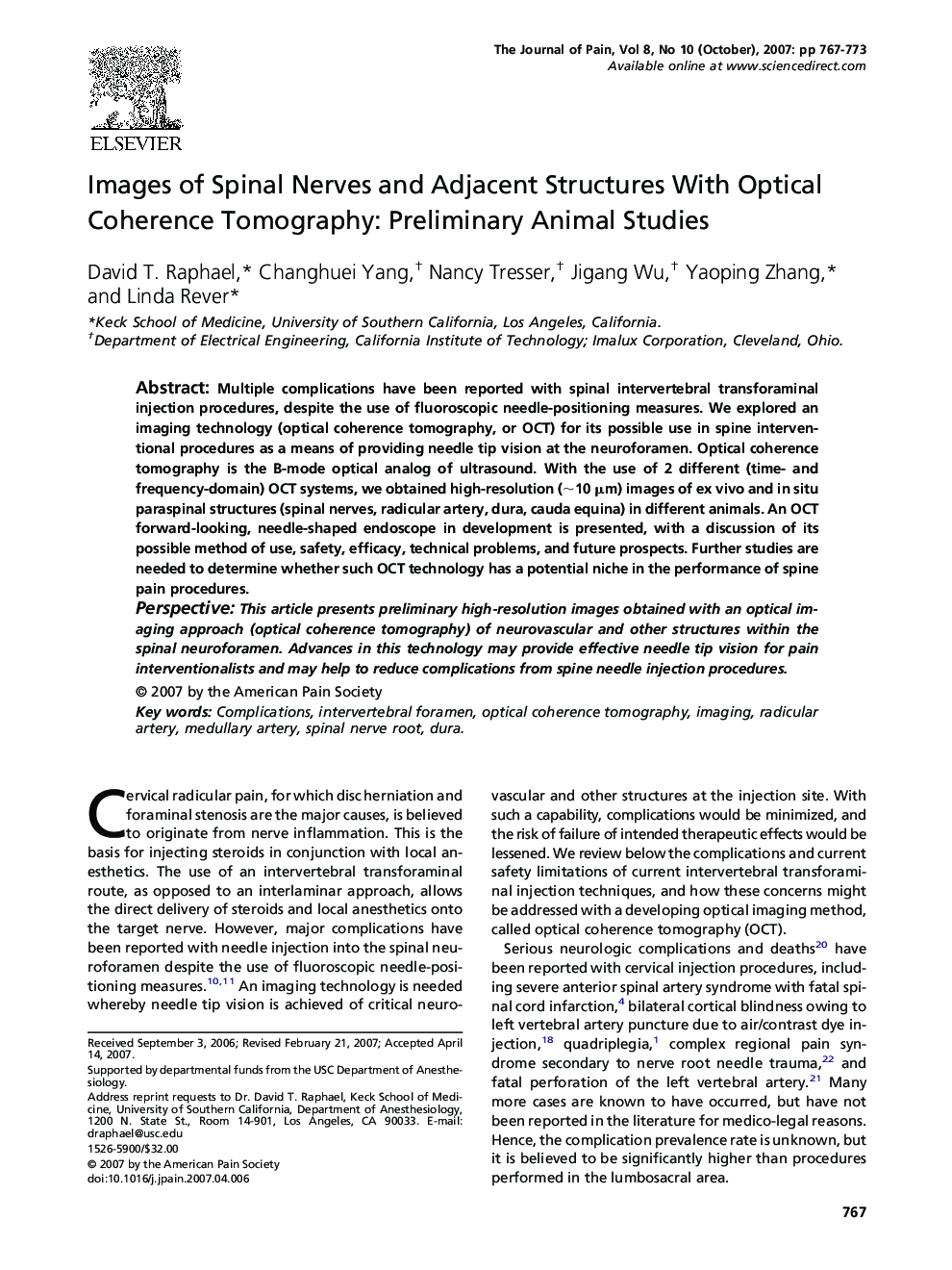| Article ID | Journal | Published Year | Pages | File Type |
|---|---|---|---|---|
| 2735095 | The Journal of Pain | 2007 | 7 Pages |
Multiple complications have been reported with spinal intervertebral transforaminal injection procedures, despite the use of fluoroscopic needle-positioning measures. We explored an imaging technology (optical coherence tomography, or OCT) for its possible use in spine interventional procedures as a means of providing needle tip vision at the neuroforamen. Optical coherence tomography is the B-mode optical analog of ultrasound. With the use of 2 different (time- and frequency-domain) OCT systems, we obtained high-resolution (∼10 μm) images of ex vivo and in situ paraspinal structures (spinal nerves, radicular artery, dura, cauda equina) in different animals. An OCT forward-looking, needle-shaped endoscope in development is presented, with a discussion of its possible method of use, safety, efficacy, technical problems, and future prospects. Further studies are needed to determine whether such OCT technology has a potential niche in the performance of spine pain procedures.PerspectiveThis article presents preliminary high-resolution images obtained with an optical imaging approach (optical coherence tomography) of neurovascular and other structures within the spinal neuroforamen. Advances in this technology may provide effective needle tip vision for pain interventionalists and may help to reduce complications from spine needle injection procedures.
